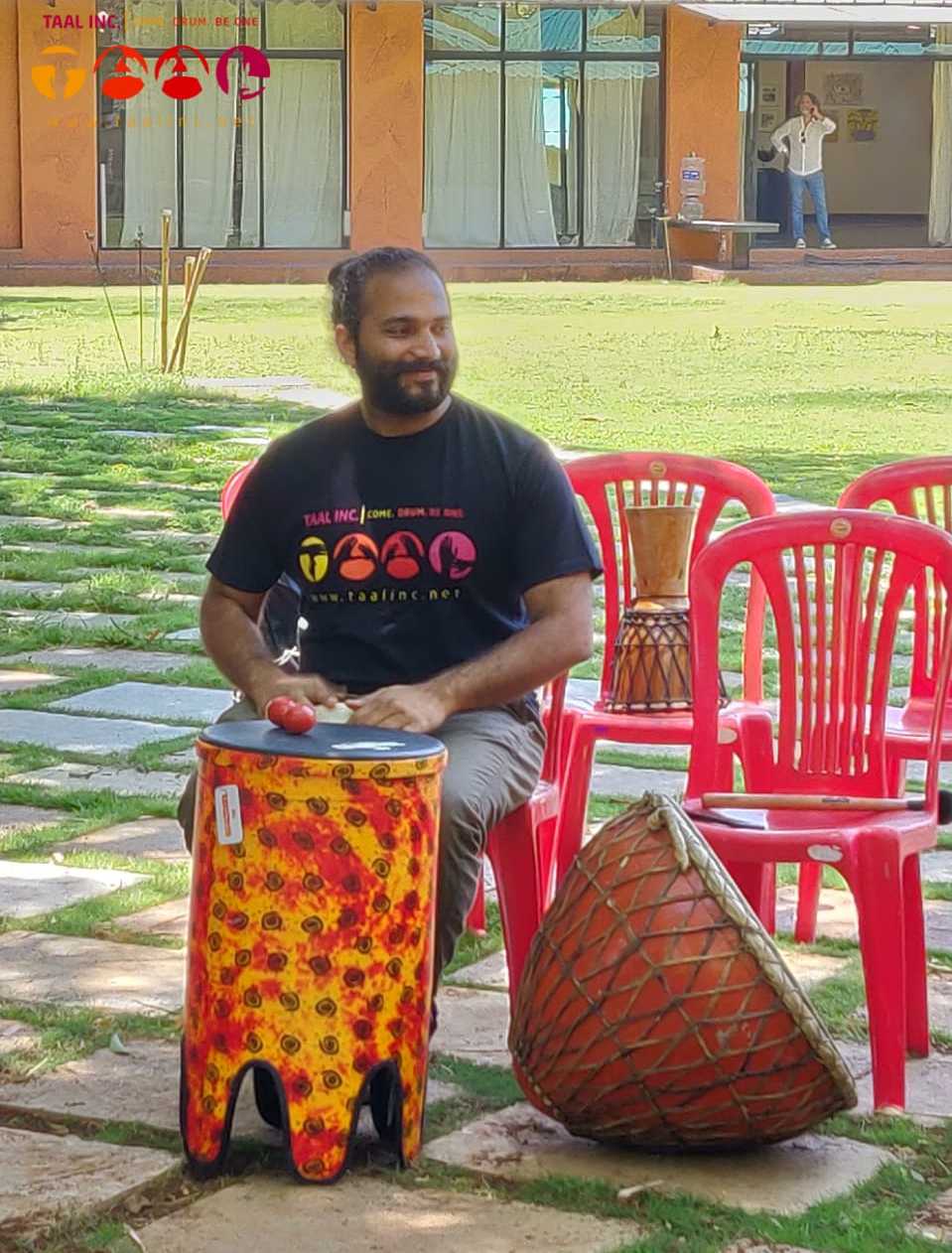As I walk to Kava gallery every morning, a little pattern is evolving. I walk down India street. I take a moment to stop, stare and appreciate the Jacaranda trees as I walk a few blocks ahead. I stop at the Seven Eleven and pick up some fruits and my morning coffee. I am invariably going over the previous day’s rhythm in my head and letting my thoughts wander. Before I know it, I reach the venue where the early birds are ensuring that they’ve gotten te best seats in the class, that their recorders are in place and working correctly, practising their technique, enjoying some morning sun and so on.
Before I start describing what rhythm we played today, I’d like to share another wonderful story uncovered by fellow djembefola, music composer, producer and friend Bruno Coon who also, incidentally, is the person who has worked with A. R. Rehman and played some Cora/Kora for him on one of his projects. (Yes, I will get more information on this). The world is small is probably an overused sentence but the connections that draw us all close together never cease to amaze me. Here’s a story that Pune will be very proud of: (In Bruno’s words)
Bruno Coon: “So I had the phrase “Carpe Diem” in mind and remembered that it doesn’t directly translate the way most people use it: ‘Seize the Day’ but it is closer to ‘Pluck the Day’ or maybe ‘Harvest..’ It’s from a Ovid poem about the uncertainty of life.
In the poem it says “Don’t listen to Babylonian soothsayers” So the Internet being what it is, I thought I’d look up “Babylonian Soothsayers”. Well, Wiki doesn’t have it, which means I win some kind of prize. What did turn up was a story about a religious practice among Babylonians.
They would tie a ball of yarn tight, play drums, burn incense and sing prayers. Then they would bat the ball back and forth. The length of time it took for the ball to unwind was the length of the petitioner’s life. This ritual moved as a game to India where it took the name of the city that it was most popular in Pune.
Now of course, that has attained a new resonance.
Then a bit later the English showed up and stuck a few feathers in the ball and took the game with them, where it became a regular event at the mansion of a man named Badminton. So, now I know that Badminton/Pune was once a serious ritual to determine one’s fate. And there were drums.”
Absolutely fascinating don’t you think?I was blown away. Thanks Bruno for sharing this with me. It’s been a pleasure drumming with you.
Mamady starts by saying, “You’re still on Planet: Mamady!”, so we were going to do one more of Mamady’s rhythms. Today we played one called, ‘Balandugu Sila.’ Balandugu is the village where Mamady is from and ‘Sila’ means ‘The Route/the way/or (sometimes) the path.” The path from Conakry to Balandugu is about a thousand kilometres long. The journey starts at the South-West and ends at the North-East of Guinea. “Some parts of the road are bad and some are good,” said Mamady as he told us how the scenery changes as the journey progresses from a coastal horizon to mountainous regions and then to the Savanah; the land of Mandingue.
After 26 long years of training, travelling and performing Mamady’s journey home was a memorable one. This journey always took him back to his early days. There were happy moments, sad moments, funny and humorous moments on this journey home. This rhythm is an anchor for that part of his life.
Here’s what the rhythm sounds like:
Sila
We started with the song towards the end of the West African Djembe Classes and according to Mamady we would not have time to sing the entire song in the true way it is supposed to be sung (minus our respective accents!). Hence we only got a demonstration of the full version.
We sang a short version of the song. The song remained just as sweet and thought provoking.
We sang a short version of the song. The song remained just as sweet and thought provoking.
The words to the song are:
Sila Laka Eh
Sile Laka Ehhhhh
Balandugu Sila Laka
And this is what the short version of the song sounds like: (Make sure you hear the whole piece to experience the progression in the intensity of the song and the singers!
Mamady gave us some teasing and tantalizing phrases to play in the technique or improvisation section. It was just the stuff I needed to sink my teeth into. I noticed that everybody was pushing it and really striving hard to get their technique and chops sorted out. I also noticed that Mamady pushed us that extra bit so that we would rise up to the occasion and emerge from these ten days having successfully journeyed to the top of the mountain.
Today two people bid us adieu, Tara and Michael. With a heavy heart the eventuality of goodbye’s is nearing us.
I do hope to see this very room of international djembefola’s and djembefolette’s drumming under one roof, by a beach or in a small village in India doing Drumming Circles for Healing and rhythm.
Tomorrow we ride with Famoudou to a land of a new story, a new rhythm and a new song.
Come. Drum. Be One.
Taal Inc.


